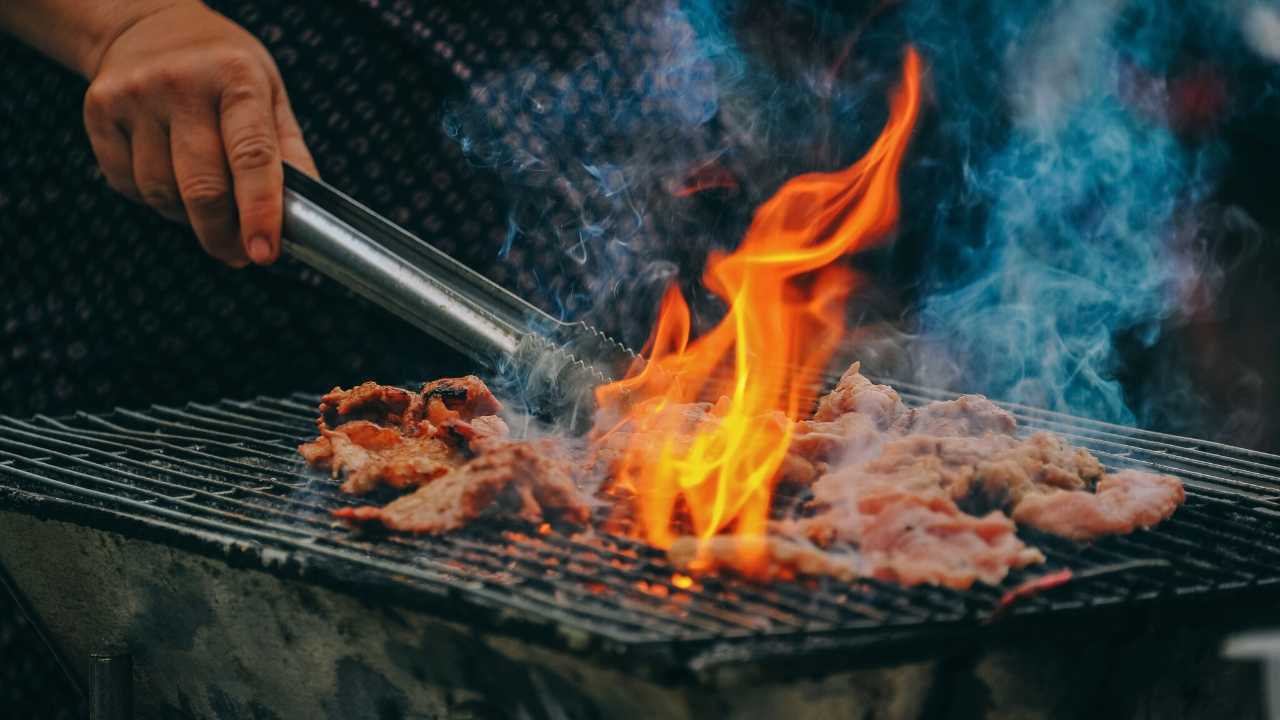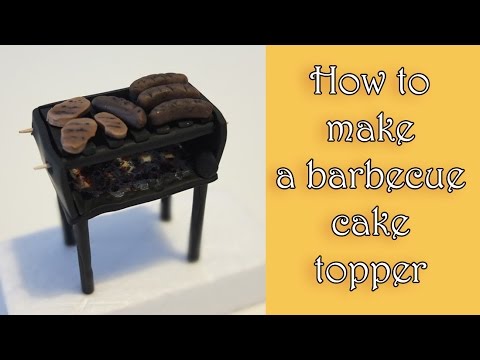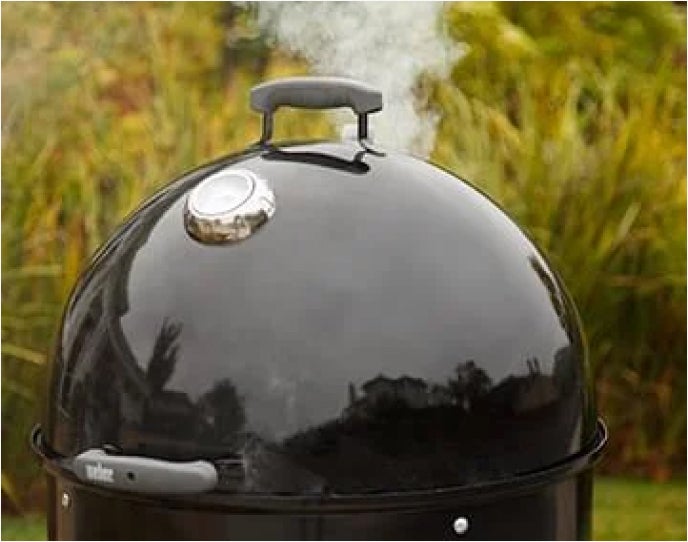
Cook food on the coals to get maximum heat. The heat produced by a charcoal grill with large open vents will be higher. If your flames burn brightly, it means that there is sufficient oxygen. If your flames burn too fast, you won't have enough oxygen. If you are cooking your food too quickly, close the vents. The heat will rise the more you turn up the flames. You are burning too much charcoal if the flames are too low.
Ventilation
When you are cooking with a charcoal grill, you may have come across a device called an intake vent. This device supplies oxygen to the combustibles. This is the source of the grill's "fuel." The more open the vent is, the more oxygen can enter the grill and therefore raise the temperature. A key part of controlling the temperature is controlling the oxygen level.
The main way to control the temperature is by using the charcoal grill's intake ventilation. Near the vent, look for two arrows. If the arrows point at half-open, then the vent may be open. The top lid houses the exhaust dampers and oxygen. You can regulate the fire's temperature and intensity by closing and opening them. Also, the larger the vent, the hotter the fire will get.
As much as possible, the charcoal grill's vents should be open. The vents can be left open and result in charcoal that burns hotter and quicker. The grill's internal temperature can be reduced and smoke production decreased by closing the vents. The bottom vent should be opened, and the top one should be closed. If you are noticing too much smoke, close the bottom vent. But if it doesn't, you can always close it halfway or completely.
The outtake ventilation is another component you need to think about. The outtake vent, unlike the intake vent draws in oxygen from the atmosphere. Properly venting charcoal and wood fires will prevent them from smothering the fire. In order to maintain the proper temperature, it is best to adjust the intake valve before cooking. Beginners should start at the intake and then work their way up.
Exhaust vent
The exhaust vent on a charcoal grill controls the amount of air that is allowed to enter the cooking area. When the vent is partially or fully open, more oxygen will enter the cooking area, which will result in a hotter fire. But if the vent closes, then less oxygen will reach the cooking areas, which will result in a smaller flame. Controlling the exhaust vent requires consideration of many factors.
The exhaust vent of a charcoal grill works to balance the oxygen levels in the bottom and top chambers. To cook the perfect hamburger, you need to have control over both fuels. The charcoal grill exhaust vents are sometimes called dampers. They do not allow heat to escape, but instead control the temperature. Proper use of the vent is a way to improve the taste of your food while keeping it juicy and tender.
The most important component of a charcoal grill is its exhaust vent. If you want to get the most heat from the charcoal, you should cook it directly over the coals. If you wish to control temperature, however, you can use a 2-zone method. By cooking in sections, the 2-zone method allows you to move your food around. To help regulate the flame, you can open the top vent if the food is too hot.
An intake damper is the second part of an exhaust vent for charcoal grills. This vent is located on the bottom side of the grill. The oxygen required to burn charcoal and wood is reduced by opening the vent. The intake damper is usually located at the bottom of your grill. The fire can heat up if the vent is open. It heats the fire and makes it more efficient, allowing you to cook more food while not having to open the lid.
Reduce intake

An intake vent allows air to enter charcoal grills. The grill will heat up, allowing oxygen to enter. An effective charcoal grill intake damper allows air to flow into the grill. An open intake damper allows for more oxygen to the grill. Closed vents restrict oxygen. Too much air can cause the coals to heat up and burn food. A closed damper will kill the coals.
Vents and dampers are often called intake and exhaust vents, but these are the same thing. An intake damper is located in the lower portion of a charcoal barbecue, while an exit vent is located at the top. An exhaust vent and an intake damper are placed on the charcoal grill to draw in oxygen. To ensure the proper temperature of your food, keep them open. The charcoal grill will produce more smoke if it is too hot.
To increase or decrease the temperature, you can adjust the charcoal grill intake damper. The vents are more open, which allows more oxygen to enter. Grills that have less air will be cooler. Most charcoal grills have two dampers, one on the lid and another in the bottom bowl. The temperature of your charcoal grill is affected by the damper. Keep it open to enjoy the best smoke flavor. Keep in mind that it may take between 10 and 20 minutes for the charcoal grill intake to settle.
The charcoal grill intake damper prevents the fire spreading beyond control. A charcoal grill lid is essential. Without it, the charcoal will be volatile and burn to ashes. It is easiest to light a charcoal barbecue by closing the vents. These prevent drafts, keep the fire from burning, and maintain a controlled temperature. This is also known to be a "fire triangular" system that regulates the temperature of your grill.
While it is still warm, wash the grill grates.
It is much easier to clean grates on a grill while they are warm than to use chemicals or other metal tools. You will need to soak your grates in a solution consisting of one cup of vinegar and one-half cup of baking soda. After letting the mixture sit for approximately an hour, scrub the grates well with a steel wool pad or a scouring mat. This method is safer and more effective than many chemical solutions.
After every cooking session, you should clean your grill grates. Scrape any food that has brown on the grill grates using a quality stainless steel brush. To remove food that has become browned on the grill grates, you may also want to use a separate or built-in scraper. Remove any bristles that become loose from the brush. After you have cleaned the grates well, you can rinse and dry them.
Cast-iron grates must be washed using soap and water. If the grates have a heavy buildup of grease, it could cause them to lose their non-stick properties. For grates to stay looking good, it is vital to clean them properly. This is also true for porcelain grill grates. They should be washed with soap and water. Vegetable oil can be used instead of a chemical cleaning solution to avoid rusting.
Aluminum foil can also be used to clean the grill grates. Use tongs to remove the aluminum foil from the grill grates. Remove the bits of food that have stuck to the grill grates with the help of a brush. Let the grill cool completely before wiping it. This will make sure that your grill is clean. You can cook on a charcoal grill for just a few minutes.
Checking the vents

The charcoal grill's vents control the oxygen level and the temperature inside. You will learn how to use the vents correctly and master charcoal grilling. This will help you control the temperature, flavor and aroma of your food. To avoid a fire, you should close all the vents and let the grill cool off before storing.
It is quite common for charcoal grills' lids to become rusty after heavy rain has fallen. This can cause the grill to become closed and restrict oxygen flow. This can lead to a semi-cooked meal or semi-burnt charcoal. For a charcoal grill to function properly, its vents must be functioning correctly. Check them regularly to prevent any problems and make your cooking experience more enjoyable.
The function of a vent in a grill is to regulate how much oxygen gets in and out. If you cook in winter, when there is less oxygen, the bottom vent becomes more important. This will ensure that your food cooks faster. The purpose of a vent is to regulate temperature. If the vent is not functioning, an aluminum pan with similar effects can be used. While it won't affect temperature as much like water, it can help you cook better food.
The top vent also goes by the name of the exhaust damper. Properly using the damper for charcoal grilling is vital. If it's closed too much, the fire will be too hot and you'll get too much smoke. It is essential to have the right settings in order to get the smoke you desire. You should adjust the vent damper to suit the food you are cooking. Also, consider the charcoal grill type you are using.
FAQ
What are your basic cooking skills
Basic cooking skills include being able to read and measure ingredients, prepare food safely, clean up after yourself, and cook. You need to master these skills if you want to cook for your own meals. You can also save money by cooking at home.
How do you learn to cook the best?
Cooking is something that everyone should be able to do. If you don't know how to cook, you miss out on some great food experiences. When learning how to cook, the first thing to do is find a recipe you love and follow it closely. Next, you'll want to practice making small changes to the recipe until you feel comfortable making the dish yourself. Try cooking for others. This will help you improve at cooking and also allow you to test your skills.
What is the cost of a culinary school?
The cost of a culinary school depends on where you are, how much you study, and what program or course you choose. The average tuition cost is $10,000-$30,000 annually. Most students graduate with about $20,000 in debt. There are some programs that offer grants and scholarships as well as work-study options.
How do I get motivated to cook?
Sharing meals with family and friends is the best part of cooking. Cooking for yourself is much more enjoyable than cooking for others. If you want to be motivated to cook, try making something new. This will help you learn about new techniques and ingredients. Also, you can use recipes from different cultures to expand your culinary knowledge.
How to be a Chef
There are many routes to becoming a chef. To start, you can take a course at your local community college. Next, consider attending culinary school. You can also apply for a paid internship.
Do I have to buy ingredients in order to cook?
There is no need to purchase all the ingredients. Most grocery stores sell premade sauces and other items you can use as substitutes. Premade meals are an option if you're looking for a way to save some money.
Can you be a self-taught cook?
Self-taught cooking is possible! No matter how much you know, cooking is something that everyone enjoys. If you are interested in learning how to cook, start cooking at home. Start small, such as making pancakes for breakfast and spaghetti sauce at dinner. Try new recipes and be open to experimentation when learning how to cook. You might make a few errors along the way.
You can learn to cook in a matter of hours or weeks depending on your level of cooking ability. It is important to remember that cooking doesn't have to be about following recipes. There are so many ways to prepare food.
Statistics
External Links
How To
How to make a perfect omelet
Omelets is one of my favourite breakfast foods. But how do you create them perfectly? There are many recipes and methods I tried, but none worked. So today, I want to share some tips and tricks with you so you can make your own delicious and fluffy omelets every morning.
It is important to know that eggs can be temperamental when making omelets. Eggs must be purchased fresh, preferably organic, and kept chilled until ready for cooking. You must keep them cool enough to allow the whites to form properly and the yolks to become too runny if they're not kept at the right temperature. This causes your omelets to look oddly colored. If you're going to cook them immediately, it is best if the eggs are still warm.
Another tip is to separate the egg before adding it to the pan. You don't want the white to get mixed with the yolk, as this could cause the egg to curdle.
If you add the egg directly onto the stovetop, you might end up burning the bottom part of the egg, which would ruin the texture of your omelet. Instead, put the egg in the microwave for 10 seconds before putting it into the pan. The microwave heat cooks the eggs just right without overcooking them.
Next, let's talk about mixing the eggs. When mixing eggs, it is important to thoroughly beat them. To do this, take the bowl from the mixer and flip it upside-down. Then, vigorously shake the bowl. This allows the air to be whipped and the egg to be mixed thoroughly.
Now comes the fun part - pouring the milk into the mixture. The first step is to pour half of the milk in the beaten eggs. Next, fold the eggs into the remaining milk. Do not worry if you see streaks of egg; they will disappear when the omelet is flipped.
After you have done folding the eggs, heat the pan on medium heat. The oil will start to smoke. Once the oil starts getting hot, add 1/4 cup of butter to the pan and swirl it around to coat the entire surface of the pan. Now carefully crack open the lid of the pan and sprinkle salt into the pan. A pinch of salt will help prevent the omelet from sticking to the pan.
Once the omelet has formed, cover the pan again and wait for the top side to set completely. Use a spatula to flip the omelet or turn the pan upside-down. Cook the opposite side for another minute. Take the omelet out of the pan and immediately serve.
This recipe works best using whole milk. Skimmed milk is also possible.